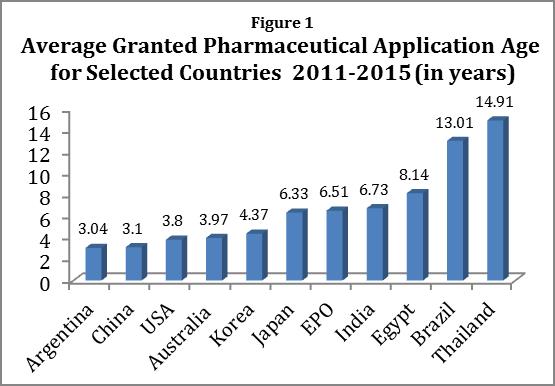Cross-posted from the Mister Copyright blog.
 Earlier this month, a federal judge in the Southern District of New York issued an order rejecting the Department of Justice’s (DOJ) interpretation of a consent decree governing the way the performance rights organization Broadcast Music Inc. (BMI) licenses its songs. The ruling was in response to a DOJ statement that the consent decrees controlling BMI and ASCAP should be interpreted to include a “full-work” licensing agreement that would require any entity that controls part of a composition to offer a license for the whole composition. The implications of the DOJ’s evaluation would be disastrous for both artists and the organizations that represent them, and while the judge’s order is likely not the final say in the debate, it represents a strong endorsement of the rights of publishers and songwriters to control their creative works.
Earlier this month, a federal judge in the Southern District of New York issued an order rejecting the Department of Justice’s (DOJ) interpretation of a consent decree governing the way the performance rights organization Broadcast Music Inc. (BMI) licenses its songs. The ruling was in response to a DOJ statement that the consent decrees controlling BMI and ASCAP should be interpreted to include a “full-work” licensing agreement that would require any entity that controls part of a composition to offer a license for the whole composition. The implications of the DOJ’s evaluation would be disastrous for both artists and the organizations that represent them, and while the judge’s order is likely not the final say in the debate, it represents a strong endorsement of the rights of publishers and songwriters to control their creative works.
PROs and the Consent Decrees
Performance rights organizations (PROs) act as intermediaries between songwriters and parties who wish to perform their copyrighted works publicly. Pooling compositional copyrights and offering “blanket licenses” to users such as bars, stores, gyms, radio and television stations, and Internet music distributors, PROs facilitate access to millions of songs while eliminating the need for individualized negotiations and licensing agreements. PROs also collect royalties from their licensees and distribute them among their member songwriters, composers, and music publishers, providing a workable solution to an otherwise impossibly complex system of individual agreements.
ASCAP and BMI are governed by consent decree agreements that have been in place for over 75 years and were introduced by the Department of Justice to promote competition in the marketplace for musical works. Under the decrees, PROs are encouraged to compete with one another to recruit songwriters and must offer licenses to venues and users on equivalent terms. It’s a system intended to benefit both emerging, unknown songwriters and established artists in order to prevent any one PRO from leveraging undue market influence.
Full v. Fractional Licensing
But even with the support of PROs, complicated licensing issues arise when a musical composition has more than one author or rights owner. In 2014, the Antitrust Division of the DOJ initiated an inquiry into the effectiveness of the consent decrees, soliciting comments from various stakeholders on whether the decrees obligate ASCAP and BMI to offer licenses to an entire work when not all owners of the composition are members of the organization. “Full-work” licenses allow for a song to be licensed provided that one owner consents by way of membership in a PRO, regardless of how much of the composition that party owns or whether the co-owners have conflicting contractual agreements.
Default copyright law treats joint authors of a single work as tenants-in-common, with any co-owner retaining the right to grant a nonexclusive license to the entire work without the consent of other owners, so long as the licensor compensates the other co-owners. As this rule is strictly the default, co-owners are free to agree to alternate arrangements with regard to licensing the underlying work, including one in which an author may only offer a license to the partial interest it holds in the work. This type of agreement, known as “fractional” licensing, requires that a licensee obtain additional licenses from all other rights owners or the PROs representing them.
The comments received by the DOJ as part of its consent decree investigation showed conflicting views on the treatment of multi-owner works. Rightsholders claimed that PROs had never offered full licenses and urged the DOJ to add language to the decree that would confirm this understood feature of the agreement. Music users and licensees, by contrast, argued that full licensing was always part of the deal and also pressed the DOJ to amend the decree to reflect their opinion. These differing opinions were never addressed in past revisions of the decrees because most licensees would obtain blanket licenses from both BMI and ASCAP, which would then charge fees based on their respective market shares, accounting for songs to which they represented only a partial interest.
DOJ Gets it Wrong
With new licensees entering the market in the form of streaming internet services, the DOJ decided it was time to clarify this neglected, but important, part of the decrees. In a statement issued last month, the Department concluded that it would not be in the interest of the public to modify the decrees to permit fractional licensing, insisting that full-licensing was the intent of the decrees and would not upset the rights of co-authors. But despite positioning its statement as an interpretation of the existing decrees, the DOJ statement actually modified a decades-old industry standard while trampling on the rights of creators and rights owners.
Instead of explaining how full-licensing doesn’t violate copyright law, the statement focuses on the “immediate access” to works that would be threatened by fractional licensing. The DOJ repeatedly warns of the consequences of having to secure licenses from multiple owners or authors, claiming it will result in licensees “simply turning off the music.” But the statement seems to confuse the original intent of the decrees with the creation of a system that guarantees immediate access to any song a licensee might want to play. While licensing efficiency is important, respect for the rights of all those responsible for creating a work shouldn’t be discarded for a haphazard licensing mechanism.
The statement goes on to argue that fractional licensing would force licensees and music users to carefully track song ownership and rights information to avoid potential infringement, a process that would be nearly impossible due to the lack of a reliable source of ownership data. But as Register Pallante explains in her response to a request for the Copyright Office’s insight on the licensing of jointly-owned works, full-licensing would impose a much more extreme burden on PROs that would have to ascertain, song-by-song for millions of songs, whether they have the right to grant a full license. These logistical challenges would surely result in higher operational costs that would have to be recouped through higher commissions to PRO members.
In addition to logistical problems, Register Pallante warns of the legal complications that would inevitably result from a full-licensing scheme: “Such an approach would seemingly vitiate important principles of copyright law, interfere with creative collaborations among songwriters, negate private contracts, and impermissibly expand the reach of the consent decrees.”
Songwriters and PROs Strike Back
Not surprisingly, the songwriting community was outraged by the DOJ’s disregard for artists’ rights and criticized the statement for its betrayal of long-accepted and practical licensing mechanisms. Just weeks after the statement was issued, the Songwriters of North America (SONA) – an advocacy group founded by and made up of artists and composers – sued the DOJ, claiming the agency overstepped its authority and that its ruling violated the property rights of songwriters by potentially invalidating private contracts between co-authors and collaborators.
PROs also joined forces to fight the Justice Department’s interpretation of the consent decrees, with ASCAP pursuing legislative reform while BMI took legal action to challenge full-licensing in federal court. In a pre-motion letter to Judge Louis Stanton, BMI warns of the disastrous consequences of the DOJ’s interpretation and urges the court to determine that its consent decree allows for the long-standing industry practice of fractional licensing.
On September 16th, Judge Stanton issued an opinion and declaratory judgment unequivocally rejecting the Justice Department’s interpretation of BMI’s consent decree. The opinion makes clear that “nothing in the consent decree gives support to the Division’s views,” and that because infringements and remedies are not addressed, the decree “neither bars fractional licensing nor requires full-work licensing.”
The decision was celebrated by songwriters and PROs as a sensible and informed response to the DOJ’s misguided understanding of the decrees. But while Judge Stanton’s order is now the controlling interpretation of the BMI decree, the Justice Department may appeal the decision, and it’s likely that music licensees will push back with their own lawsuits and legislative efforts. Regardless of future developments, the unprecedented unified effort of PROs, mobilization of artist organizations such as SONA, and clear message by an informed federal court bode well for the protection of creators’ rights and the preservation of sound copyright law.
 In a
In a  Last month, global health initiative
Last month, global health initiative 
 Last week, the European Court of Justice—the judicial authority of the European Union—issued an anticipated
Last week, the European Court of Justice—the judicial authority of the European Union—issued an anticipated 